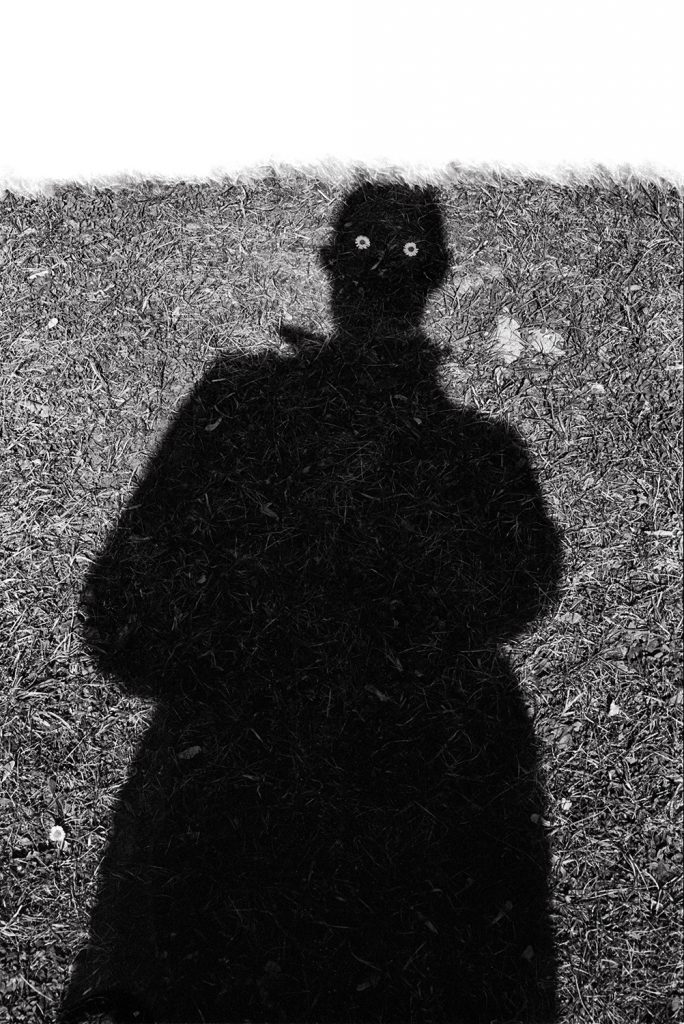
As a street photographer, one is on the constant, unrelenting lookout for interesting, unpredictable moments that may happen in front of the lens. Nevertheless, when there is a lull in the day’s action, fill it with a less kinetic subject: The photographer. To many, the selfie is the domain of the social media influencer, the romantic vacationing couple, or the teenager and friends, snapped with little thought at the tap of a screen, however, street photography self-portraits have been around for a long time. Henri Cartier-Bresson, Vivian Maier, and Elliott Erwitt were but only a few photographers that saw the possibilities on the street for a creative selfie. Here are some ways to take unconventional self-portraits on the street.

Making a street photography self-portrait may be a spontaneous decision – a reaction to something discovered. Or maybe a whole production planned, directed, and recorded. In either case, the best are in some way unconventional and show some thought of creative intent. This sets them aside from the countless smartphone snapshots cluttering mobile device photo libraries across the world. Whether telling a story by incorporating environmental bits and pieces around, or using shadow and light to emphasise certain parts of the portrait, it is fun to play around with the idea, which is, of course, to use the knowledge of, and skill in, street photography with the camera trained on the photographer.
Mirrors and Reflections

Save for photographers named Power and Atget, the tripod is not traditionally a street photographer’s tool. And while the camera may be set on a wall or a rock to make a timer-triggered self-portrait, a more likely conceit is the photographed reflection. Whether framed against the glass of shop or office windows, the metal surfaces of cars, vans, or trains, in calm water, or even through unexpected mirrors, there are many ways to make a striking, creative reflected self-portrait.
The reflection of the photographer, camera to the eye, can juxtapose strongly with graphics seen on the high street, or against the face of someone else peering out of a coffee shop. Or, when making a story about classic motorcycles, frame the photographer reflected and distorted in the mudguard of a bike’s back wheel. Vivian Maier was a master of the reflected self-portrait, often using shop windows or mirrors in her compositions. For an added twist, looking for curved or tilted reflective surfaces, like funhouse mirrors, to bend and distort the image can scratch a surrealist itch – and become an engaging image on entry of a website.
Alternatively, look for mirrors or reflective surfaces that help to tell a story. At a friend’s recent birthday party, there was the mirrored “Are You A Lebowski Achiever?” Time magazine cover from the Big Lebowski through which I made a self-portrait. It may have been too dark in the cellar bar, but the idea was a good one.
Street Art in Street Art

With a wide enough lens, long enough arms, and good enough judgement, the lens can be turned, somewhat blindly but directly onto the photographer rather than through reflection. Shooting with a 50mm lens and with frustratingly short arms, this isn’t something I do often, however, the key to such self-portraits is to find a background interesting enough.
Street art, graffiti, and murals are strong contenders. Like many cities nowadays, Glasgow is a fairground of murals. Use these to make interesting juxtapositions and compositions featuring both the city and the photographer. While murals are on display longstanding, graffiti can be ephemeral. Here today, gone tomorrow. Making a self-portrait using graffiti, particularly hidden gems that most won’t find or think to photograph, makes for a unique picture.
Though photographs taken blindly can be challenging, broad choices of composition can still be considered. Perspectives and angles can help to place the photographer into the art or apart from the scene – it all depends on the creative intention as the photo is being made.
Chasing Shadows

Playing with shadows is another inventive way to experiment with creative street photography self-portraits. A favourite of mine, made by the great Elliott Erwitt, is his shadow punctuated by two “eyes” made from daisies on the grass. Starting a new roll of film, I made my own homage of that image in the summer last year. The best time to make shadow self-portraits, of course, is in the morning or evening when the sun is low and shadows are long – though not too long or they don’t fit in the frame.
When making a simple shadow on the ground, find a place free of old chewing gum and cigarette ends. These photos, though, are best when the shadow is interacting with something, say a street light, bus stop, bicycle, or thicket of trees, rather than standing on its own, so look out for clever ways to make that shadow self-portrait stand out.

There are, of course, many other ways to make creative self-portraits on the street. In this famous photo, for instance, Cartier-Bresson makes a surreal self-portrait lying on a wall photographing down over his torso to his feet. Others may use the aforementioned timer-triggered selfie, or maybe double exposures can be used, first to photograph the street, then later a creative exposure of the photographer on top. Who knows? Maybe even some cosplay or dress-up. There are no rules, so get out there and enjoy it.